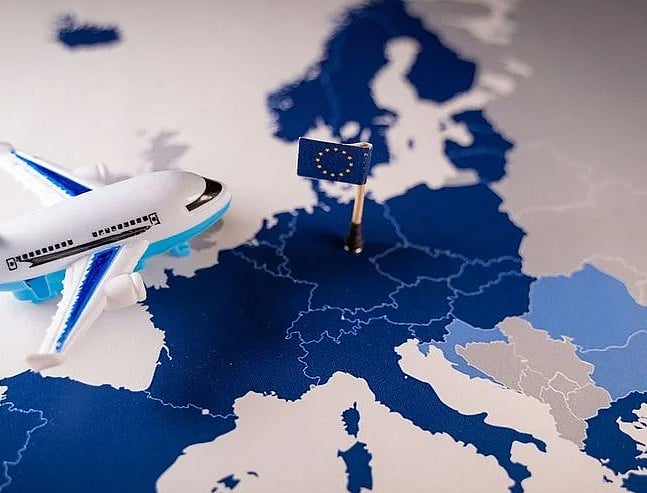Important Schengen travel advice from Emirates, Air Arabia, Lufthansa for passengers
Airlines inform travellers that new ESS will significantly impact border procedures

UAE airlines such as Emirates and Air Arabia have issued important travel advisories for passengers heading to Europe amid changes in Schengen border procedures.
The airlines informed travellers that the new Entry/Exit System (EES) rolled out at Schengen borders starting Sunday (October 12) significantly impacts border checks.
The airlines have informed travellers that this automated biometric system will impact border checks significantly, requiring updated travel preparations.
Replacing traditional passport stamps
The EES replaces traditional passport stamps with a digital biometric system that records facial recognition and fingerprint data for non-EU travellers.
The system then collects personal data each time a traveller reaches the borders of European countries using the EES.
This means that a visitor's movements in the EU or Schengen Zone will be registered in the system.
How it works
“The system collects personal information along with biometric data, including fingerprints and a facial image. It applies to non-EU/Schengen nationals visiting for short stays—up to 90 days within any 180-day period. On your first trip, border authorities will register your biometric data and passport details in the system. On subsequent visits, the system will automatically record your entry and exit, eliminating the need to repeat the process,” Emirates stated on its website.
Lufthansa also stated on its website: "The new Entry/Exit System (EES) is a central element in making border controls smarter and more digital. It concerns all third-country nationals who spend a short stay of up to 90 days within a period of 180 days in the Schengen Area."
The new biometric checks aim to make travel faster, smoother, and more secure — shortening queues and reducing waiting times.
Travellers should check official airline guidelines and arrive early to ensure a seamless experience under the new system.
At border controls, passengers are also advised to allow extra time, particularly during their first trip after the system's implementation, as authorities familiarise themselves with the new procedures.
Shift
The ESS rollout marks a significant shift in how travellers from non-EU countries experience border control when entering and leaving the Schengen area.
The EES replaces traditional passport stamping with an automated digital process. Upon arrival at external Schengen borders — including airports, land crossings, and ports — non-EU visitors must provide biometric data, including a photograph and fingerprints (children under 12 are exempt from fingerprinting).
This data, linked to a traveller’s passport information, is securely stored in the system for three years, allowing officials to monitor stays and prevent illegal overstays or identity fraud.
Travelers can check their registered data and remaining authorized stay duration through a new mobile app being rolled out by Frontex, the EU border agency.
The rollout will be gradual, with implementation across participating European countries continuing through April 10, 2026.
During the transition period, passports will still be manually stamped to ease the adjustment
Sign up for the Daily Briefing
Get the latest news and updates straight to your inbox
Network Links
GN StoreDownload our app
© Al Nisr Publishing LLC 2025. All rights reserved.